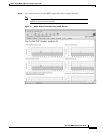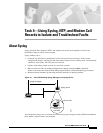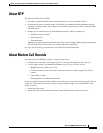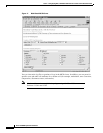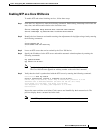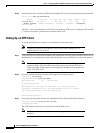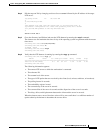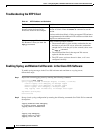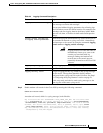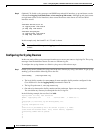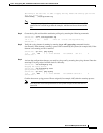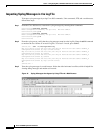
Task 4Using Syslog, NTP, and Modem Call Records to Isolate and Troubleshoot Faults
About Modem Call Records
%!
Basic Dial NMS Implementation Guide
Step 4
Edit the ntp.conf file by changing
multicastclient
to
server
followed by the IP address of the target
NTP server:
# @(#)ntp.client 1.2 96/11/06 SMI
#
# /etc/inet/ntp.client
#
# An example file that could be copied over to /etc/inet/ntp.conf; it
# provides a configuration for a host that passively waits for a server
# to provide NTP packets on the ntp multicast net.
#
server 172.22.255.1
Step 5
Go to the directory /usr/lib/inet/ and start the NTP daemon by entering the
xntpd
command.
The daemon sets and maintains the time-of-day of the operating system in agreement with the master
time server.
onionring:/etc/inet$ cd /usr/lib/inet/
onionring:/usr/lib/inet$ ls
in.dhcpd xntpd
onionring:/usr/lib/inet$ xntpd
onionring:/usr/lib/inet$
Step 6
Verify that the NTP daemon is running by entering the
ntpq -p
command:
onionring:/usr/lib/inet$ ntpq -p
remote refid st t when poll reach delay offset disp
==============================================================================
*maui-rtr-01.mau CHU(1) 8 u 49 64 377 1.08 -0.131 0.08
onionring:/usr/lib/inet$
The following information appears:
The remote NTP server to which the workstation is connected.
The reference ID.
The stratum level of the server.
The type of NTP packet that was received by the client (local, unicast, multicast, or broadcast).
The polling interval in seconds.
The reachability register in octal.
The current delay of the server in seconds.
The current offset of the server in seconds and the dispersion of the server in seconds.
The delay, offset, and displacement between the client and the server in seconds.
When the daemon starts, most of the time values will be zeros until there is a sufficient number of
queries taken by the daemon to determine the correct offset.



